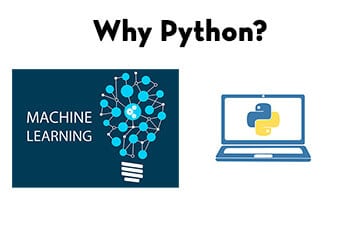Things You Need to Know As a Node.js Developer

Technologies these days are moving forward at a really fast pace. There will always be amazing things on the path. Sometimes, things are so innovative and interesting that our mind is barely able to grasp what’s going on.
Over the course of time, JavaScript has earned respect far and wide. The original purpose of JavaScript is to cater to the web platform. However, with the help of growth and maturity in technologies, it’s now possible to use JavaScript for a whole lot of purposes. Who thought of using web technology for other heavy-duty purposes?
There are many driving factors behind the popularity of JavaScript. Just take a look at Node.js. This is one of the most influential techs we have that uses the power of JavaScript at its core. Node.js allows the usage of JavaScript for all sorts of things – developing powerful web apps, managing servers, handling the system, server-side tasks and a lot more! Needless to say, Node.js is pushing JavaScript forward A LOT.
If you’re interested in Node.js, then there are things you need to know before you jump right into it.
Let’s get started with short descriptions of both JavaScript and Node.js.
What is JavaScript?

JavaScript is one of the oldest web technologies that’s still going STRONG. In fact, it’s more than 20 years old (at the time of publishing this article)!
JavaScript is a high-level, interpreted programming language with other characteristics like dynamic, prototype-based, weakly typed and multi-paradigm. Along with HTML and CSS, JavaScript is the 3rd major building block for the World Wide Web.
First developed by Brendan Eich in 1995 and published publicly in 1997, the original purpose of JavaScript was to serve as a “glue” language that would enable developers to GLUE together different tools for doing things. It would allow unconventional and innovative ways of different web technologies. The web back then wasn’t so fluid and dynamic like today, so JavaScript filled the spot pretty well.
In its 20+ years of life, JavaScript has evolved a lot. The official name of JavaScript is ECMAScript. The latest version of JavaScript (at the time of publishing this article) is ECMAScript 2018 released in June 2018.
Because of the power, JavaScript has escalated to become the powerhouse of other elements like desktop and mobile apps! Learn more on the scope of JavaScript usage.
What is Node.js?
Traditionally, JavaScript was only meant for the web platform where the JavaScript code would run on web browsers only. Well, no more.
The rise of popularity in JavaScript has given the rise of a lot of changes. It’s more important than ever to be able to run JavaScript apps outside the traditional web browsers.
In this effort, Node.js is the leading platform. Node.js is basically a runtime for JavaScript, allowing JavaScript programs to run as a standalone application. It’s also an open-source and free software. It’s quite similar to other popular frameworks like Ruby on Rails, ASP.NET and Spring Framework etc.
At its core, Node.js uses the well-known V8 JavaScript Engine. If you didn’t know, V8 Engine is originally the JavaScript engine of Google Chrome. The project is now open-source and free. Node.js took the chance and implemented it for delivering maximum performance.
Why use Node.js

There are numerous features that come up with Node.js despite being a completely free tool for both personal and commercial usage! No wonder that the community is picking up Node.js rapidly
JavaScript
Node.js allows the usage of JavaScript everywhere. JavaScript is no longer limited to web browsers only. Currently, JavaScript is the only choice for developing web apps in the browser. With the power to run the apps outside the browser, it’s now possible to use JavaScript to do more than its original intention!
In a sense, Node.js has literally revolutionized the servers. As JavaScript is a common language to web developers, they can now use it as the central powerhouse of the entire web ecosystem.
Blazingly fast performance
As mentioned before, Node.js uses the V8 JavaScript Engine powered by Google. V8 is unique and more powerful than other JavaScript engines. It can compile and run JavaScript code at a native performance!
Essentially, V8 translates the JavaScript code into native machine code. In addition, Node.js includes a single thread model that performs all the I/O operations in an asynchronous manner. This trick allows Node.js to perform significant benefits of handling bulk amounts of simultaneous connections having high throughput.
Lightweight
Node.js is a lightweight solution. Typically, it uses a basic event-driven architecture. Using this method, every single operations and call are performed as a series of
Thus, Node.js users can enjoy
Single language for all layers
Other popular web techs like ASP.NET or Spring DEMANDS the developer to know some additional programming language for writing server-side codes (VB.NET, C# or Java etc.).
On the other hand, Node.js utilizes pure JavaScript for all the other layers – client and server side.
Host anywhere
Node.js is available on almost all the platforms. With the exponential growth of Node.js users, most of the popular web hosting services like Google, AWS, Amazon, Microsoft Azure, Heroku, and others offer support for Node.js out-of-the-box.
Things you have to know as a Node.js developer
Are you interested in Node.js? Then consider following the following tips for becoming a better one.
Note – These are the important and exciting things on my radar. On the contrary, the horizon of JavaScript is never-ending.
Adding some types and schemas
JavaScript is one of the most versatile programming languages of all, especially with the support for typeless coding. Instead, try to incorporate Typescript – a superset of JavaScript.
The main problem that arises a lot with JavaScript is for datatype confusion due to typeless coding. Typescript requires you use data types with other additional features like improved modules, functions and variables etc.
What is typeless coding? In the case of programming languages, you have to work with TONS of variables. When running the program, these variables will be assigned to the memory using a certain data type (integer, floating point, string, and boolean etc.). Generally, you would have to pre-define the data type (at the time of declaration). Some programming languages like JavaScript allows declaring variables without any specific data type. That’s typeless coding.
Typeless coding has both its pros and cons compared to typed coding (you MUST define the data type). You can code faster using a typeless programming language. However, this can lead to more confusing errors than usual.
For example, you may end up trying to compare two variables with different data types. In the case of typed coding, such errors would easily be fixable during compilation of the program. However, typeless coding doesn’t generate any compile-time error in such situations. Instead, the real problem arises at the runtime when the runtime tries to perform a certain task with a non-matching data type. This will throw an error. Debugging such issues is also time-consuming and troublesome.
That’s where Typescript comes in. When compiled, Typescript results in JavaScript code, so no need to get frightened. Much like C++ which is a superset of C.
Typescript has gained remarkable momentum in 2018. Because it solves a lot of problem of pure JavaScript, it’s also getting into the Node landscape.
Use a good linter
Linters are outstanding tools. I don’t know how I could ever live without them!
A linter is essentially a small program that will continue analyzing your code on the go and figure out any potential error(s) of the code you’re writing.
Setting up a good linter isn’t very difficult. It can take the highest 5 min to set up a well-functioning one. Voila! As a helping hand, a linter can essentially solve a number of VIGOROUS problems that you didn’t even think of!
I’m a good programmer. I don’t need a LINTER!
Okay, I see you. Good luck! Let’s see how many hours you’re PROUDLY willing to waste debugging all the treacherous and hideous issues. And by the way, good programmers will use a linter MOST of the times.
A better understanding of different programming concepts
Architecture and design knowledge are essential for writing a powerful program. However, it seems like the community
However, while on the process, I don’t recommend heavy Java/Spring patterns. We’re on the Node-land for a reason, right? If you compromise with the flexibility too much, then it’s not going to be helpful.
Check out the newest features
JavaScript is always an ongoing project with no sign of getting obsolete anytime soon. Check out more on the validity of JavaScript for the future.
With all the new features coming in, it’s worth being familiar with them. However, not all of them should be implemented in your programs. In fact, you may not even find all of them helpful for you.
From time to time, you might hit a new gem that would definitely benefit you a lot. Another thing to look for is, some features may require sacrificing code simplicity and clarity.
Enrich your testing portfolio
Over the decade, the development community has progressed a lot. On the contrary, the testing methods didn’t mature that much. In fact, it’s easily arguable that most of the test methods are following the rules of the old generations.
Are you already familiar with the testing pyramid, integration, unit and end-to-end tests? Congrats! These are the building blocks of a successful testing strategy. However, there are other things that have emerged (Microservice, Serverless, and rich frontends). You also have to have a good testing strategy for these features as well.
Think like an attacker
It’s one of the most important things you should always pay close attention. Otherwise, the price to pay is literally too much to justify.
Now, what’s the best way of defending any sort of security threat? Be the attacker!
Let’s break it down with a simple analogy. Suppose, you have your own home. Your target is to protect it from burglars. How do you do that? You become the burglar!
If you take the role of a burglar, only then you’ll be able to figure out all the possible ways of breaking inside the house. Okay, so you improve the security. Now, you become the burglar again. You can easily find ways of bypassing the current security. You improve the security again.
In the case of Node, the security is an especially major thing to consider. You shouldn’t rely on 3rd-party companies or static security scanners. The types of possible attacks on Node and the ecosystem is numerous (NPM and the development pipelines are the latest).
With tons of additional parts to be added in the project (database types, IAM role, AWS service and much more). So, the best way of preventing threats is programming wisely. You have to bake security practices into your and your team’s DNA for adding a powerful touch of security on every single part.
Things aren’t that scary, to be honest. Just get familiar with the common attack types and tools. When you design your app, develop a habit of figuring out how you would attack this. With enough time, your mind will automatically develop a better design decision. You’ll see the reflection in every single line of code you write.
Package update strategy
There is basically 2 package update strategy – updating as soon as possible and updating only when needed.
While the first approach looks like the best choice, it’s not the best practice. That’s the reason behind the devastating flat-stream. Those who waited didn’t get infected. Others were doomed.
Again, it’s a bad decision not updating at all. This essentially kills the project. You and your team have to come up with a sweet spot between “no update” and “update too soon”.
Switch to different techs
When you’re working on the same project for a long period of time, it’s highly likely that you’re using the same frameworks for a longer period of time. This can narrow down your view on better alternatives.
Strive to investigate other projects frequently, especially the successful open-source ones. GitHub can serve as a great source.
Study Linux OS
By far, Linux is the most successful operating system for enterprises. Why? It’s free, open-source and packed with all the powerful features like the well-known Linux kernel. The community behind Linux is growing and having a good understanding of the system is a must for competing in the competitive market.
Turns out, understanding the Linux process will earn you an even greater position. For example, it’s necessary to understand the Linux process for monitoring, working with Docker, guarding processes and shutting down gracefully etc.
Try to have a good understanding of the lifecycle of a process, signals, common commands, types of processes and others.
Dive deeper into Node
My favorite quote from Ryan Dahl, the creator of Node.js v0.1 is,
“You can never understand everything. But, you should push yourself to understand the system”.
Ryan Dahl
Having a solid understanding of the underlying mechanism can prove a valuable asset when it’s necessary to handle hairy production issues or designing some infrastructural components.
You may already be familiar with the core building blocks like v8 and libuv. Why not jump deeper? I believe 2019 is a great year to deepen your understanding of Node.js. Maybe starting things that are happening inside each libuv event loop cycle?
Learning Node.js

Are you a new developer willing to dive deep into the world of Node? With all the indications, it’s safe to assume that Node.js is going to prevail for a long period. As long as JavaScript lives, there’s no stopping the march of Node.js.
Let’s check out what it takes to dive into the world of Node.js!
As you’ve always expected, JavaScript is the backbone of Node.js development. Before diving deeper into JavaScript, I recommend learning HTML and CSS first. At least, have a good understanding of these two.
Ready? Check out all the available sources for learning JavaScript. I personally prefer the free alternatives. For the paid ones, I’ve collected them from Udemy.
JavaScript
- Free courses
- Paid courses (Udemy)
Now, for learning TypeScript, I recommend checking out the following tutorials.
Note – Before learning TypeScript, it’s important for you to learn JavaScript. TypeScript is essentially a superset of JavaScript and for writing a successful TypeScript code, you need to have a solid basis of JavaScript.
TypeScript
- Free courses
- Paid courses (Udemy)
It seems like you’re ready to go with Node.js! Check out the Node.js tutorials!
Node.js
- Free courses
- Paid courses (Udemy)
Conclusion
Node.js is literally the ULTIMATE tech to date. It’s still new but over time, it’s bound to become more and more mainstream. With all the indications of a bright future, Node.js is here to stay.
Start learning Node.js to title yourself as an aspiring and prominent developer in the competitive market. Don’t forget the aforementioned tips to sharpen your Node.js skills to a greater level.
Cheers!







